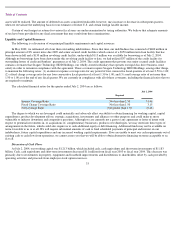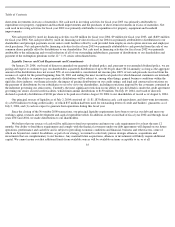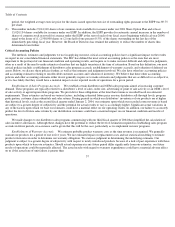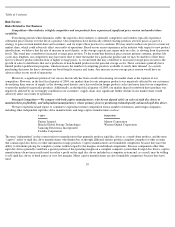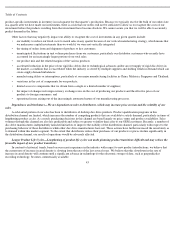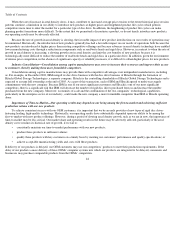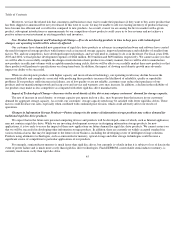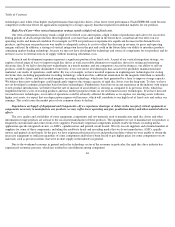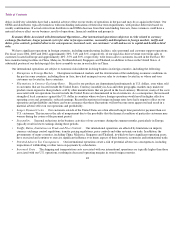Seagate 2003 Annual Report Download - page 39
Download and view the complete annual report
Please find page 39 of the 2003 Seagate annual report below. You can navigate through the pages in the report by either clicking on the pages listed below, or by using the keyword search tool below to find specific information within the annual report.
Table of Contents
what we used in estimating the warranty expense accrual. On July 26, 2004, we announced the introduction of our five-year warranty on
products shipped into our distribution and retail channels, and we expect that the impact of this change will increase our future warranty costs.
Valuation of Deferred Tax Assets. The recording of our deferred tax assets each period depends primarily on our ability to generate
current and future taxable income in the United States and certain foreign jurisdictions. Each period we evaluate the need for a valuation
allowance for our deferred tax assets and we adjust the valuation allowance so that we record net deferred tax assets only to the extent that we
conclude it is more likely than not that these assets will be realized.
Recent Accounting Pronouncements
In April 2003, the FASB issued SFAS No. 149, “Amendment of Statement 133 on Derivative Instruments and Hedging
Activities,” (“SFAS 149”) which amends and clarifies financial accounting and reporting for derivative instruments, including certain
derivative instruments embedded in other contracts and for hedging activities under SFAS No. 133, “Accounting for Derivative Instruments
and Hedging Activities.” SFAS 149 is effective for contracts entered into or modified after June 30, 2003 except for the provisions that were
cleared by the FASB in prior pronouncements. The adoption of SFAS 149 did not have a material impact on our results of operations or
financial position.
In May 2003, the FASB issued SFAS No. 150, “Accounting for Certain Financial Instruments with Characteristics of both Liabilities and
Equity,” (“SFAS 150”). This statement establishes standards for how an issuer classifies and measures in its statement of financial position
certain financial instruments with characteristics of both liabilities and equity. In accordance with the standard, financial instruments that
embody obligations for the issuer are required to be classified as liabilities. This Statement is effective for financial instruments entered into or
modified after May 31, 2003, and was effective in our fiscal quarter ended October 3, 2003. The adoption of SFAS 150 did not have a
significant impact on our results of operations or financial position.
In December 2003, the FASB issued a revision to FASB Statement No. 132, “Employers disclosures about Pensions and Other
Postretirement Benefits,” (“SFAS 132-R”).
This statement establishes standards that require companies to provide more details about their plan
assets, benefit obligations, cash flows, benefit costs and other relevant information. In addition to expanded annual disclosures, companies are
required to report the various elements of pension and other postretirement benefit costs on a quarterly basis. This statement is effective for
fiscal years ending after December 15, 2003, and was effective for our fiscal quarter ended April 2, 2004. Because the revisions only effect
disclosure requirements, the adoption of SFAS 132-R did not have an impact on our results of operations or financial position.
38







